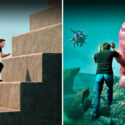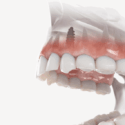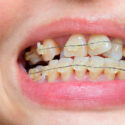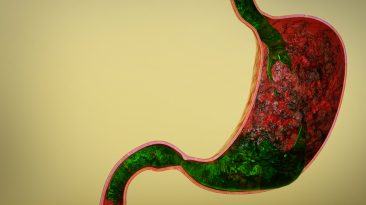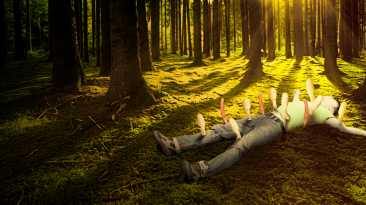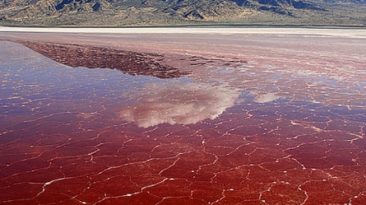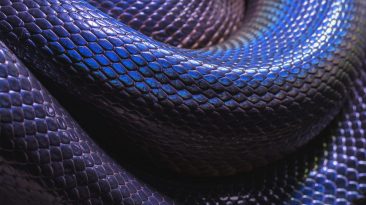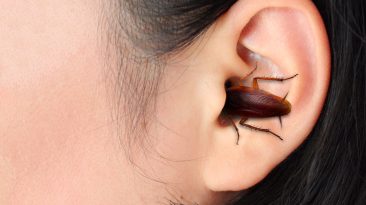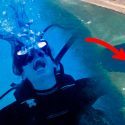Ah, it’s a beautiful day for a hike in the woods. There’s nothing but the fresh air, trees and killer bears. Oh my. What would encountering a bear in the wild be like? In what ways would different kinds of bears attack? And what could you do to stay alive?
Close encounters with bears don’t always lead to them attacking you. There are only about 40 bear attacks around the world every year, give or take. But if you get attacked, you do get in big trouble. And each type of bear could have a different dinner plan for you. You could run into a 58 kg (128 lb) female black bear, or a 315 kg (700 lb) grizzly bear with her cubs.
Or, if you’re in the Arctic, you might face a vicious 590 kg (1,300 lb) polar bear. Staring up at the gaping jaws of any bear could be the last thing you see. Will your next move save your life? After a peaceful night of camping, you unzip your tent and find you’ve made a big mistake. You’ve left some food out, and now you’ve been graced with the presence of a dangerous visitor. It’s a black bear.
You gasp and freeze in place, but don’t worry yet. Black bears usually don’t attack in a sudden encounter. Mostly, they attack in self-defense. So don’t get too close. You slowly step out of the tent and scoot a few steps back to give the bear some space. But you’re not far enough away. Now, the bear is showing aggression with some grunts.
You could run. But then you’d have to leave all your stuff behind. Instead, you spot a nearby tree and think, “I could climb that and be safe.” As you dash toward the tree, the bear is right behind you. Luckily, you were closest to the tree. With running speeds up to 40 km/h (25 mph), black bears are fast. You scramble up a few branches and look down to see the bear climbing too.
Yep, black bears can climb. So now you’d be screwed. When it’s close enough to attack, the black bear swipes its massive claws at you. A black bear’s claws are good for climbing. But they aren’t that sharp, so it’s the bear’s strength you’d worry about. Black bears can move boulders weighing 140 kg (309 lb) with one paw. And one swipe from this bear knocks you down to the ground. Ouch.
Your surging adrenaline helps you spring up. While the bear is still in the tree, it’s time to make a run for it. You’d sprint down the trail until you couldn’t run anymore. You need to stop and catch your breath. But what’s that dreadful crunching sound? Turning around slowly, you freeze. Oh no. It’s a grizzly bear with two cubs.
The momma bear begins rubbing her body on a nearby tree. Is she just scratching an itch? Not quite. She lets out a loud growl. You realize that you’ve surprised her, and she’s being aggressive to protect her cubs. But you wouldn’t have much time to react. This opportunistic hunter charges toward you at a blazing 64 km/h ( 40 mph). You make a quick evasive move, but the bear swings one of its claws at you.
A grizzly’s claws aren’t razor-sharp since the bear uses them to dig. But they’re strong, and one hit knocks you down hard. The grizzly is on top of you, and its body weight keeps you pinned. Its massive jaws are about to clamp down on you with a force of 8,274 kPa (1,200 PSI). You think you’re done for, and you might be right. The best thing you could do now is to play dead.
It’s a terrifying gamble, but it would be your best shot at surviving. The bear would sniff and slobber all over you, each movement of its paws digging deeper into your body. But it works. Momma grizzly walks back over to her cubs. And you’re completely motionless until you hear the bears crawling off into the distance. Whew.
You scramble to your feet and run back to your car. Finally, you’re safe. You survived. Not so fast. There’s one more type of bear to worry about. And it has been stalking and hunting you for prey. It’s a male polar bear. Wait, what? Aaaaaahh. A polar bear follows its prey using its exceptional sense of smell. So now you won’t be able to hide. And you left your car key with the rest of your gear at the campsite.
After a day of bear attacks, this would be the end of the line. One swipe from the bear’s 9.5 cm (3.75 in) claws can snap your spine. Then, it would feast on you. As your life drains out of you, you’d suddenly realize something. Polar bears are supposed to roam the icy polar deserts in the Arctic Circle. That’s definitely not where you went camping.
As you snap out of this traumatic fantasy, you have to face reality as a pair of day hikers step out of their car and find you in your dirty pajamas. But at least you weren’t attacked by other creatures too. Like murder hornets.
Sources
- “Grizzly Bear | National Wildlife Federation”. 2022. nwf.org.
- “How Strong Is A Grizzly Bear – Grizzly Bear Strength – Zooologist”. 2021. zooologist.com.
- “How Strong Is A Grizzly Bear?”. 2020. grunge.com.
- “10 Black Bear Facts! | National Geographic Kids”. 2016. natgeokids.com.
- “12 Amazing Black Bear Facts”. Sarah McPherson. 2022. discoverwildlife.com.


